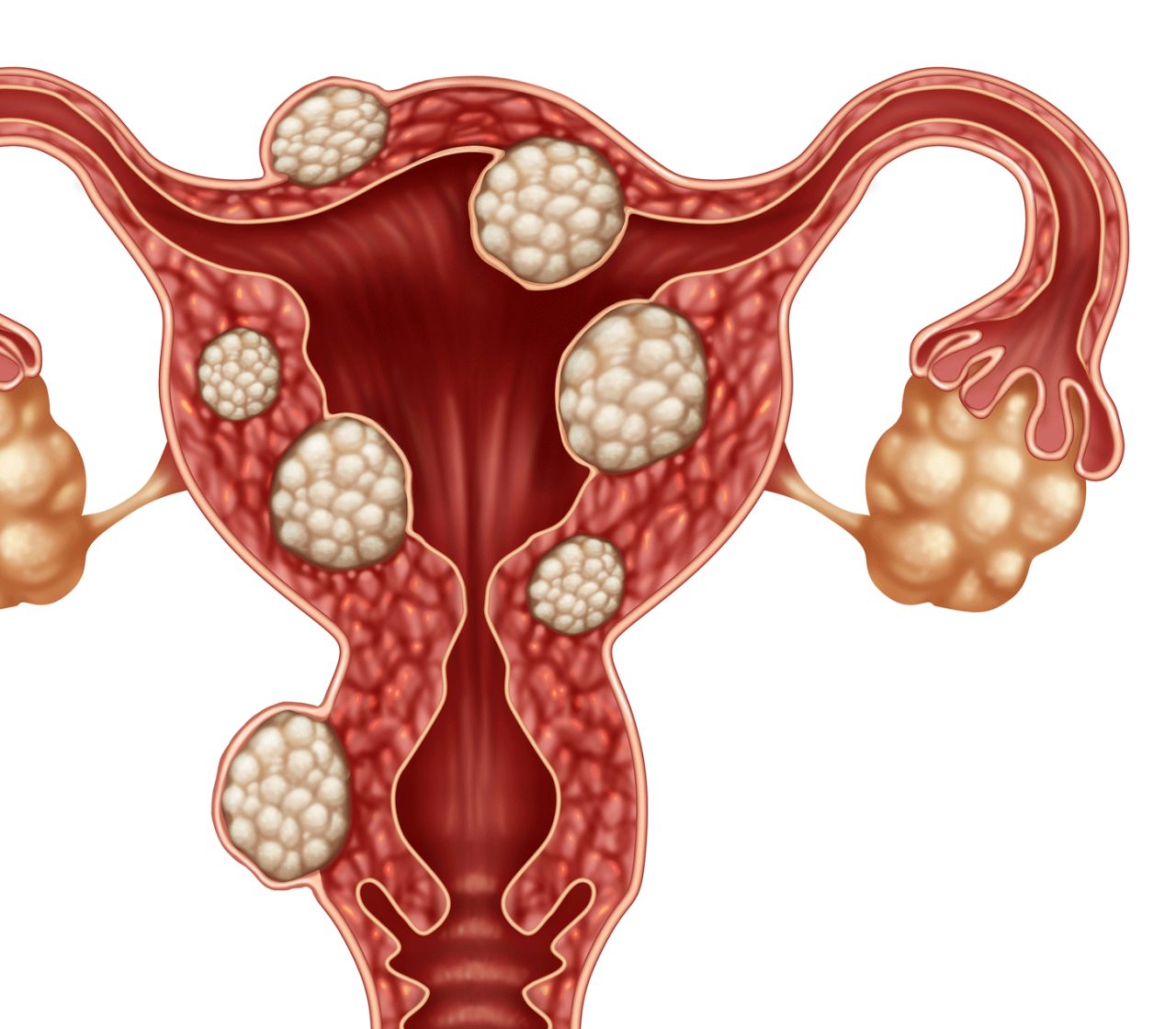Symptoms of Uterine Fibroids

While they are not cancer, uterine fibroids, growths inside your uterus, can become uncomfortable and cause bleeding as they grow. Here's what you should know.
Uterine fibroids are growths that form inside your uterus. It's not clear what causes fibroids, but they're very common. Between 20 percent and 80 percent of women will develop at least one fibroid by the time they reach the age of menopause.
Fibroids aren't cancer, and they most likely will never turn into cancer. Still, they can become uncomfortable and cause bleeding and other symptoms if they grow large.
It can be hard to tell the difference between uterine fibroid symptoms and those of other common conditions that affect women, including heavy periods and endometriosis.
Here's a guide to fibroid symptoms, and what to do if you have them.
YOU MIGHT ALSO LIKE: What Is Endometrial Cancer?
Symptoms of uterine fibroids
Many women don't have any symptoms from fibroids. Whether you have symptoms depends on the size of your fibroids, where in your uterus they're located, and how many of them you have.
Some fibroids are too small to see. Others can grow as large as a grapefruit. Bigger fibroids are more likely to cause symptoms that include:
- Heavy periods
- Bleeding in between periods
- A feeling of fullness in your belly
- Swelling in your abdomen that may look like a pregnancy
- Pain during sex
- Lower back pain
- Constipation
If fibroids are large and pressing on your bladder, you might feel like you need to urinate more often than usual. When you do go, you may not be able to fully empty your bladder.
Fibroids can distort the shape of your uterus, making it harder for you to get pregnant. Women with large fibroids who get pregnant may be at higher risk for miscarriage, preterm birth, and bleeding. They're also more likely to need a C-section.
How to manage uterine fibroid symptoms
Ultrasound is the imaging test used to diagnose fibroids. The technician will move a probe over your belly or place it into your vagina. The probe releases sound waves that bounce off your uterus to create a picture of any fibroids that are inside.
You don't need to treat fibroids if they're small and aren't causing symptoms. They should shrink on their own once you reach menopause.
If your periods are uncomfortable and you need pain relief, you can try an over-the-counter nonsteroidal anti-inflammatory drug (or NSAID) like ibuprofen (Advil, Motrin) or naproxen (Aleve).
These long-term birth control methods can lighten heavy bleeding and ease painful period cramps:
- Birth control pill, patch, or ring
- Hormonal IUD
- Hormonal implant (Nexplanon)
- Injections (Depo-Provera)
Myfembree and Oriahnn are newer prescription medications that specifically treat heavy bleeding from uterine fibroids. These drugs also slightly reduce the size of fibroids. These drugs contain a mixture of three medications:
- A gonadotropin-releasing hormone (GnRH) antagonist, which temporarily stops the ovaries from making the hormones estrogen and progesterone
- Estradiol, a synthetic form of the hormone estrogen
- Norethindrone acetate, a synthetic form of the hormone progesterone
If medication doesn't help with heavy bleeding or your fibroids are very large, you might want to consider surgery. You have a few different options when it comes to surgically removing fibroids:
- Myomectomy removes fibroids through one large incision or several smaller incisions in your lower belly, but it leaves your uterus intact. This type of procedure may be preferable if you'd like to have children.
- Uterine artery embolization (UAE) injects tiny beads into an artery that supplies the fibroids with blood. Without their blood and nutrient supply, fibroids will eventually shrink.
- Endometrial ablation uses some form of heat energy (such as a laser or electric current) to destroy the uterine lining. This procedure isn't a good option if you want to have children because you won't be able to get pregnant afterward.
- Magnetic resonance imaging (MRI)-guided focused ultrasound is a noninvasive treatment that uses ultrasound energy to destroy fibroids.
- Hysterectomy surgically removes the entire uterus. It's the only way to cure uterine fibroids, but you will not be able to get pregnant afterward.
What you can do
See your gynecologist or primary care doctor if you have heavy bleeding and other fibroid symptoms. You have several options for treating these growths.
Consider the size of your fibroids, how much they bother you, and whether you'd like to get pregnant in the future when choosing a treatment. Make sure that you fully understand the risks and benefits of each therapy so that you can make an educated decision.
Updated:
May 09, 2023
Reviewed By:
Janet O'Dell, RN